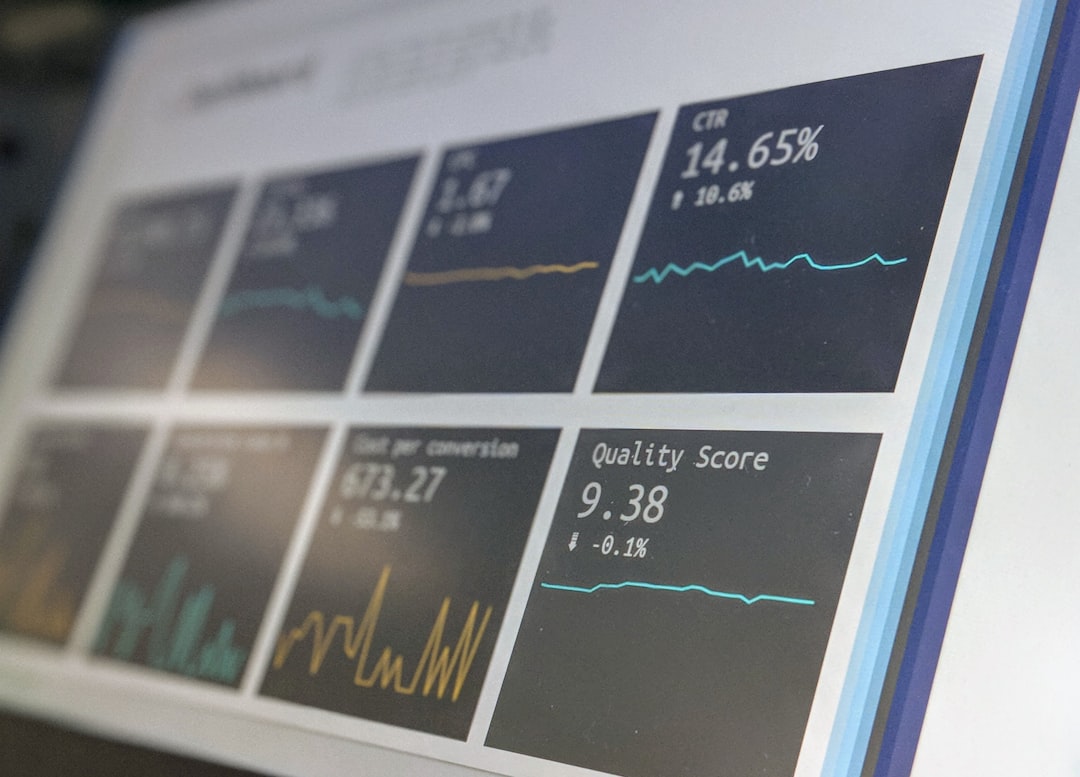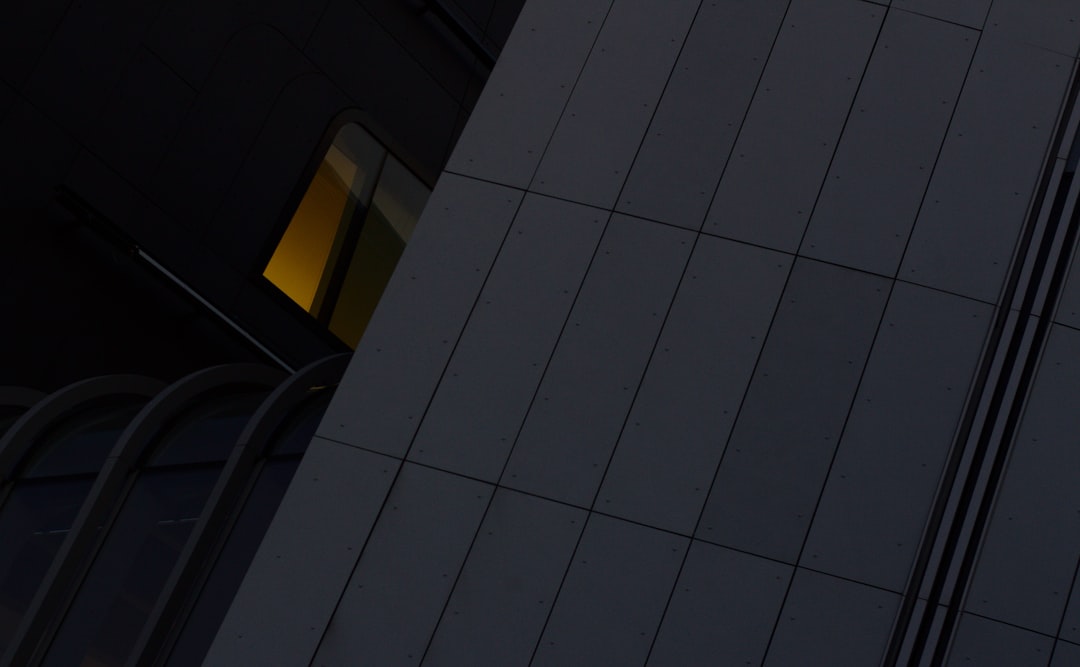Latin America’s Prime Hotspots for Digital Nomads

Introduction
The digital nomad lifestyle has turned the world into a giant office that can be set up anywhere with a reliable internet connection, a comfortable workspace and a welcoming community. Latin America has emerged as one of the most appealing regions for remote workers, offering a blend of vibrant culture, affordable living, pleasant climates and growing infrastructure for remote professionals. From bustling megacities to laid‑back coastal towns, the continent hosts a variety of environments that can suit every personality and work style.
In this guide we explore the prime hotspots across Latin America that consistently rank high among digital nomads. Each destination is evaluated on key factors such as internet reliability, coworking ecosystem, cost of living, visa options, safety and quality of life. The goal is to give you a clear picture of what each place offers, helping you decide where to set up your next mobile office.
Why Latin America Stands Out
Cost‑Effective Living
Compared with North America or Western Europe, most Latin American cities provide a lower cost of living without compromising on comfort. A decent apartment in a central district, a solid internet plan and meals at local restaurants can often be covered for a fraction of the price you would pay in cities like New York or London. This affordability allows nomads to stretch their budgets, upgrade their workspace or enjoy more travel experiences.
Time Zone Compatibility
Many Latin American time zones align well with North American business hours, making collaboration with U.S. teams smoother. At the same time, they are only a few hours ahead of Europe, which is beneficial for those who need to attend occasional meetings with European partners. The overlap reduces the need for night‑time work and helps maintain a healthier work‑life balance.
Growing Remote‑Work Infrastructure
Over the past five years, the region has seen a surge in coworking spaces, tech‑friendly cafés and community events aimed at remote professionals. Cities such as Medellín, Buenos Aires and Mexico City now host dozens of coworking venues that provide high‑speed internet, private meeting rooms, networking events and even mentorship programs. This ecosystem makes it easy for newcomers to integrate quickly.
Rich Culture and Natural Beauty
Latin America offers a striking diversity of landscapes—from Andean mountain ranges to Amazon rainforest, from desert oases to pristine beaches. The cultural scene is equally dynamic, featuring world‑class museums, street art, music festivals, culinary adventures and historic architecture. For nomads who value exploration outside of work hours, the region is a playground of experiences.
Criteria for Selecting the Hotspots
To identify the most attractive locations for digital nomads, we considered the following criteria:
- Internet Speed and Reliability – Average download/upload speeds, stability of connections and availability of fiber or 4G/5G networks.
- Coworking Ecosystem – Number and quality of coworking spaces, pricing, community vibe and additional amenities such as event spaces or childcare.
- Cost of Living – Monthly expenses for housing, food, transport, coworking and leisure activities.
- Visa Options – Availability of digital nomad visas, long‑term tourist visas or other legal pathways that allow stays longer than 90 days.
- Safety and Healthcare – General safety levels, presence of international hospitals and ease of accessing medical care.
- Quality of Life – Climate, public transport, nightlife, outdoor activities and overall livability.
Below is a deep dive into each of the top destinations that meet these benchmarks.
Medellín, Colombia
Overview
Medellín has transformed from its turbulent past into a modern, innovation‑driven city known as the “City of Eternal Spring” for its pleasant climate year‑round. The city’s emphasis on public transport, green spaces and tech education has created an environment that appeals strongly to remote workers.
Internet and Connectivity
The city boasts widespread fiber optic coverage, with average download speeds of 50‑70 Mbps in most neighborhoods. Most coworking spaces provide backup generators and redundant internet lines, ensuring uninterrupted connectivity even during occasional power outages.
Coworking Landscape
- Selina Medellín – A hybrid hostel‑coworking concept that offers flexible desks, private offices and a vibrant community of travelers.
- Atomhouse – Known for its sleek design, high‑speed internet and regular networking events with local startups.
- Impact Hub Medellín – Part of the global Impact Hub network, it focuses on social entrepreneurship and provides mentorship programs.
Pricing ranges from $15 per day for hot‑desking to $250 per month for a dedicated desk, making it accessible for both short stays and longer residencies.
Cost of Living
A one‑bedroom apartment in the trendy El Poblado district averages $600‑$800 per month. Utilities, including high‑speed internet, add about $80. Groceries and meals at local restaurants keep monthly food costs around $250‑$350. With a modest lifestyle, a digital nomad can comfortably live on $1,500‑$2,000 per month.
Visa Options
Colombia offers a Tourist Visa valid for 90 days, extendable for an additional 90 days. In 2022 the government introduced a Digital Nomad Visa that allows stays of up to 18 months for remote workers earning at least $2,000 per month. The application process is straightforward and can be completed online.
Safety and Healthcare
Medellín’s safety has improved considerably, especially in central districts like Laureles and El Poblado. International hospitals such as Clínica Las Américas provide high‑quality medical services, and many doctors speak English.
Lifestyle Highlights
- Outdoor Activities – Cable‑car rides to Parque Arví, hiking in the surrounding hills, and paragliding in nearby San Félix.
- Culture – Street art tours, salsa dancing lessons, and the annual Feria de las Flores festival.
- Nightlife – A mix of rooftop bars, craft beer pubs and clubs that stay open until the early morning.
Buenos Aires, Argentina
Overview
Buenos Aires, often called the “Paris of South America,” is a cultural powerhouse that blends European elegance with Latin American passion. Its vibrant neighborhoods, thriving arts scene and affordable living make it a top pick for creative professionals.
Internet and Connectivity
The city’s broadband infrastructure delivers average speeds of 40‑60 Mbps. Most cafés and coworking venues provide reliable Wi‑Fi, and mobile 4G coverage is extensive throughout the metropolitan area.
Coworking Landscape
- La Maquinita Co‑Working – Located in Palermo, it offers a relaxed atmosphere, regular workshops and a garden terrace.
- Urban Station – A larger space with multiple locations, providing private offices, meeting rooms and a community of tech entrepreneurs.
- WeWork Buenos Aires – International brand with premium amenities, suitable for those who prefer a familiar environment.
Day passes typically cost $10‑$15, while monthly memberships range from $180 to $350 depending on the level of access.
Cost of Living
A furnished one‑bedroom apartment in Palermo or San Telmo costs between $500 and $700 per month. Utilities add $70, and a high‑speed internet plan is about $30. Dining out is cheap; a typical lunch at a local “parrilla” costs $8‑$12. Overall monthly expenses can be kept under $1,800 for a comfortable lifestyle.
Visa Options
Argentina grants a Tourist Visa for many nationalities that allows a stay of up to 90 days, extendable once for another 90 days. In 2023 the government launched a Remote Worker Visa that permits stays of up to one year for individuals earning at least $1,800 per month. The application requires proof of income, health insurance and a clean criminal record.
Safety and Healthcare
While petty theft can be an issue in crowded areas, most neighborhoods frequented by tourists are safe, especially during daylight hours. The city’s public and private hospitals, such as Hospital Alemán, meet international standards, and many medical professionals speak English.
Lifestyle Highlights
- Arts and Culture – Tango shows, theater productions in the historic Teatro Colón, and countless galleries.
- Food Scene – From classic Argentine steak to innovative fusion restaurants, the city offers diverse culinary experiences.
- Parks and Recreation – The expansive Bosques de Palermo, a lake, rose garden and bike paths ideal for after‑work relaxation.
Mexico City, Mexico
Overview
Mexico City is a megacity that seamlessly fuses ancient history with cutting‑edge modernity. Its status as a global cultural hub, combined with a burgeoning tech scene, makes it a magnet for digital nomads seeking both professional opportunities and rich cultural immersion.
Internet and Connectivity
Fiber optic networks cover most central districts, delivering speeds of 70‑100 Mbps. 5G mobile service is expanding rapidly, and most coworking spaces have redundant internet lines to guarantee uptime.
Coworking Landscape
- WeWork México – Multiple locations across the city, offering premium services and an international community.
- COW – Co‑Working Mexico – A boutique space in Roma Norte with a focus on design and art, featuring a rooftop garden.
- El 33 – A community‑driven hub in Condesa that hosts regular hackathons and meet‑ups for developers.
Hot‑desk rates start at $12 per day, while dedicated desks range from $200 to $300 per month.
Cost of Living
A one‑bedroom apartment in neighborhoods like Condesa, Roma or Polanco costs $800‑$1,200 per month, depending on the building’s amenities. Utilities and internet add $100‑$130. Food is inexpensive; street tacos cost $1‑$2, while a dinner at a mid‑range restaurant is about $15‑$20. A modest digital nomad can live comfortably on $2,200‑$2,800 per month.
Visa Options
Mexico offers a Temporary Resident Visa that can be obtained for stays longer than 180 days and up to four years. Applicants must demonstrate a monthly income of at least $2,000 or a bank balance of $30,000. The process requires a visit to a Mexican consulate, but the visa can be renewed without leaving the country.
Safety and Healthcare
Mexico City has areas with higher crime rates, but neighborhoods favored by expats such as Polanco, Condesa and Roma are generally safe, especially after dark when accompanied by reliable transportation. The city’s hospitals, including Hospital Ángeles and ABC Medical Center, are internationally accredited.
Lifestyle Highlights
- Historical Sites – The ancient ruins of Templo Mayor, the grand Palacio de Bellas Artes and the canals of Xochimilco.
- Culinary Landscape – World‑renowned street food, high‑end restaurants, and a thriving craft‑beer scene.
- Green Spaces – Chapultepec Park, one of the largest city parks in the world, offers lakes, museums and jogging trails.
Lima, Peru
Overview
Lima, perched on the Pacific coast, is known for its gastronomic excellence, historic architecture and growing entrepreneurial ecosystem. The city’s mild desert climate and relatively low cost of living attract many remote workers looking for a blend of culture and productivity.
Internet and Connectivity
Broadband internet in central districts such as Miraflores and Barranco averages 30‑50 Mbps. Mobile 4G coverage is strong throughout the metropolitan area, and many coworking spaces provide backup satellite connections.
Coworking Landscape
- The Cowork – A modern space in Miraflores offering flexible desks, private offices and weekly networking events.
- Co‑Work Perú – Located in San Isidro, it focuses on fintech and startup communities, providing mentorship sessions.
- Impact Hub Lima – Part of the global network, it emphasizes social impact projects and hosts regular workshops.
Day passes cost $10, and monthly memberships range from $150 to $250.
Cost of Living
A one‑bedroom apartment in Miraflores or Barranco is typically $550‑$750 per month. Utilities and internet add $80‑$100. Food costs are modest; a meal at a local “cevichería” is $8‑$12, while groceries for a month cost around $200. Overall, a digital nomad can maintain a comfortable lifestyle on $1,600‑$2,000 per month.
Visa Options
Peru grants a Tourist Visa allowing a 183‑day stay, extendable for an additional 183 days. In 2022 the country introduced a Remote Worker Visa valid for up to one year for individuals earning at least $1,500 per month. The application can be completed online and requires proof of income and health insurance.
Safety and Healthcare
Miraflores and Barranco are considered safe for expatriates, especially during daylight hours. The city’s private hospitals, such as Clínica Internacional, provide high‑quality medical services, and many doctors are fluent in English.
Lifestyle Highlights
- Food – Lima is recognized as the culinary capital of South America, famous for ceviche, anticuchos and innovative fusion cuisine.
- Coastal Views – The Miraflores boardwalk offers stunning Pacific Ocean vistas, perfect for evening walks after work.
- Culture – Museums such as the Larco Museum, historic sites like the Plaza de Armas and vibrant nightlife in the Barranco district.
Cartagena, Colombia
Overview
Cartagena’s colorful colonial architecture, Caribbean beaches and relaxed vibe make it a standout coastal destination for digital nomads who prefer a seaside lifestyle without sacrificing connectivity.
Internet and Connectivity
Most hotels and coworking spaces provide high‑speed Wi‑Fi with average speeds of 40‑60 Mbps. Mobile 4G coverage is reliable throughout the historic center and the surrounding neighborhoods.
Coworking Landscape
- Hub Cartagena – A beachfront coworking space offering standing desks, a pool and regular networking events.
- Selina Cartagena – Combines accommodation with coworking facilities, perfect for short‑term stays.
- Co‑Work Cartagena – Located in the Getsemaní district, it provides a creative environment with art installations and community workshops.
Daily passes start at $12, while monthly memberships range from $180 to $260.
Cost of Living
A one‑bedroom apartment in the historic walled city or Bocagrande costs $600‑$850 per month. Utilities and internet add $100. Eating out is affordable; a seafood dish at a local restaurant is $10‑$15. Overall monthly expenses stay around $1,800‑$2,200 for a comfortable lifestyle.
Visa Options
Colombia’s Tourist Visa allows a 90‑day stay, extendable for another 90 days. The Digital Nomad Visa introduced in 2022 permits stays up to 18 months for remote workers earning at least $2,000 per month. The process is fully online and includes a background check and proof of income.
Safety and Healthcare
Cartagena’s tourist zones are well‑policed and generally safe. The city’s main hospital, Hospital Universitario del Caribe, offers quality medical care, and several private clinics provide English‑speaking staff.
Lifestyle Highlights
- Beaches – Playa Blanca, Bocagrande and the nearby Rosario Islands provide excellent options for weekend surf or snorkeling trips.
- Historic Charm – Walking tours of the walled city reveal colonial forts, plazas and vibrant street art.
- Nightlife – A mix of salsa clubs, beach bars and rooftop lounges create a lively after‑work scene.
Santiago, Chile
Overview
Santiago, nestled at the foot of the Andes, is a modern metropolis with a strong economy, excellent public transport and a high standard of living. The city’s stability, safety and tech‑friendly environment make it attractive for nomads who value a more structured urban setting.
Internet and Connectivity
Fiber optic networks cover most of the city, delivering speeds of 80‑120 Mbps. Mobile 5G rollout is ongoing, and most coworking spaces have multiple ISP connections for redundancy.
Coworking Landscape
- WeWork Santiago – Offers premium facilities across several districts, including Las Condes and Vitacura.
- Co‑Work Latam – A locally founded space focused on startup incubation, providing mentorship and investor meet‑ups.
- The Roof – A rooftop coworking venue with panoramic mountain views, popular among designers and creatives.
Hot‑desk pricing starts at $15 per day, while dedicated desks cost $250‑$350 per month.
Cost of Living
A one‑bedroom apartment in neighborhoods like Providencia or Las Condes ranges from $800 to $1,200 per month. Utilities and internet add $120. Food costs are moderate; a meal at a mid‑range restaurant is $12‑$20. A comfortable monthly budget sits around $2,500‑$3,200.
Visa Options
Chile offers a Temporary Resident Visa for remote workers, allowing stays of up to one year for individuals earning at least $2,500 per month. The application can be completed online and requires proof of income, health insurance and a background check.
Safety and Healthcare
Santiago is one of the safest large cities in South America. The city’s public hospitals, such as Hospital Clínico Universidad de Chile, meet international standards, and many private clinics cater to expatriates.
Lifestyle Highlights
- Outdoor Adventures – Ski resorts like Valle Nevado and hiking trails in the Andes are just a short drive away.
- Cultural Scene – Museums, theater districts, and a growing craft‑beer scene give the city a vibrant after‑work culture.
- Public Transport – An extensive metro system, complemented by buses and bike lanes, makes commuting easy.
Quito, Ecuador
Overview
Quito, the capital of Ecuador, sits at an altitude of 2,850 meters and offers a mix of colonial charm, modern amenities and easy access to natural attractions such as the Amazon basin and the Galápagos Islands.
Internet and Connectivity
Broadband speeds in central districts like La Mariscal and Cumbayá average 30‑50 Mbps. Mobile 4G coverage is solid, and many coworking spaces provide backup satellite connections.
Coworking Landscape
- Co‑Work La Mariscal – A vibrant space that hosts language exchange nights and tech meet‑ups.
- Impact Hub Quito – Focuses on social entrepreneurship, offering mentorship and community projects.
- Work & Play – A hybrid coworking‑café in the Cumbayá area, known for its relaxed atmosphere.
Day passes are $8‑$10, and monthly memberships range from $130 to $220.
Cost of Living
A one‑bedroom apartment in La Mariscal costs $400‑$600 per month. Utilities and internet add $70. Food is inexpensive; a typical lunch at a local “cuy” restaurant is $5‑$8. A modest monthly budget can be kept under $1,400.
Visa Options
Ecuador offers a Tourist Visa valid for 90 days, extendable for another 90 days. The country introduced a Remote Worker Visa in 2023, allowing stays of up to one year for those earning at least $1,500 per month. The process requires proof of income and health insurance.
Safety and Healthcare
The central historic district is safe for tourists, though caution is advised at night in less populated areas. Quito’s public hospitals, such as Hospital Metropolitano, provide good medical care, and several private clinics cater to expatriates.
Lifestyle Highlights
- Historic Center – A UNESCO World Heritage site with colonial churches, plazas and museums.
- Nature – Proximity to the Pichincha volcano, the Andes foothills and the Amazon rainforest for weekend excursions.
- Cultural Events – Traditional festivals, music concerts and a growing craft‑beer scene.
Montevideo, Uruguay
Overview
Montevideo, Uruguay’s capital, combines a relaxed coastal vibe with a high level of safety and political stability. The city’s European‑style architecture, beachfront promenades and friendly locals make it an appealing base for remote workers seeking a slower pace.
Internet and Connectivity
Fiber optic coverage is widespread, with average speeds of 50‑70 Mbps. Mobile 4G networks are reliable, and coworking spaces often have multiple ISP providers for redundancy.
Coworking Landscape
- Utopia Cowork – Located in the Punta Carretas district, it offers a bright workspace, event rooms and a community of freelancers.
- The Lab – A tech‑focused hub in Ciudad Vieja, providing mentorship, pitch nights and access to local investors.
- Co‑Work Montevideo – A chain of spaces across the city, known for its ergonomic furniture and regular wellness workshops.
Daily passes cost $12, and monthly memberships range from $180 to $300.
Cost of Living
A one‑bedroom apartment in Punta Carretas or Carrasco costs $700‑$950 per month. Utilities and internet add $110. Food is moderate; a dinner at a mid‑range restaurant is $15‑$20. A comfortable monthly budget sits around $2,200‑$2,800.
Visa Options
Uruguay offers a Temporary Residence Visa for remote workers, allowing stays of up to two years for individuals earning at least $2,000 per month. Applicants must provide proof of income, health insurance and a background check. The visa can be renewed without leaving the country.
Safety and Healthcare
Montevideo consistently ranks as one of the safest capitals in Latin America. The city’s public hospitals, such as Hospital de Clínicas, and numerous private clinics provide high‑quality medical services.
Lifestyle Highlights
- Rambla of Montevideo – A 13‑kilometer waterfront promenade perfect for jogging, cycling or sunset walks.
- Cultural Scene – Tango clubs, theater performances, and an active art gallery circuit.
- Cuisine – Known for its beef, seafood and wine, the city offers a diverse culinary landscape.
Comparative Snapshot
| City | Avg. Internet Speed | Coworking Cost (Monthly) | Typical Rent (1‑BR) | Visa Length for Remote Workers |
|---|---|---|---|---|
| Medellín | 50‑70 Mbps | $150‑$250 | $600‑$800 | Up to 18 months |
| Buenos Aires | 40‑60 Mbps | $180‑$350 | $500‑$700 | Up to 12 months |
| Mexico City | 70‑100 Mbps | $200‑$300 | $800‑$1,200 | Up to 4 years |
| Lima | 30‑50 Mbps | $150‑$250 | $550‑$750 | Up to 12 months |
| Cartagena | 40‑60 Mbps | $180‑$260 | $600‑$850 | Up to 18 months |
| Santiago | 80‑120 Mbps | $250‑$350 | $800‑$1,200 | Up to 12 months |
| Quito | 30‑50 Mbps | $130‑$220 | $400‑$600 | Up to 12 months |
| Montevideo | 50‑70 Mbps | $180‑$300 | $700‑$950 | Up to 24 months |
Tips for Thriving as a Digital Nomad in Latin America
- Test the Internet Before You Commit – Many cafés and coworking spaces offer a day pass. Use it to verify speed and reliability during peak hours.
- Secure Health Insurance – International travel insurance that covers medical evacuation is essential, especially in countries where public healthcare may have language barriers.
- Learn Basic Local Phrases – While many young professionals speak English, a few phrases in Spanish or Portuguese can smooth everyday interactions and foster goodwill.
- Stay Connected with the Community – Attend meet‑ups, join local Facebook or Slack groups and participate in coworking events to build a support network.
- Keep Documentation Organized – Visa applications often require proof of income, bank statements and health insurance. Keep digital copies in a cloud folder for quick access.
- Budget for Seasonal Variations – Some cities experience price spikes during high tourist seasons. Plan ahead if you intend to stay during peak months.
Conclusion
Latin America’s blend of affordability, cultural richness, improving infrastructure and welcoming communities makes it a top destination for digital nomads. Whether you crave the mountain air of Medellín, the artistic streets of Buenos Aires, the gastronomic wonders of Mexico City or the seaside tranquility of Cartagena, the region offers a hotspot to match every work style and personal preference.
By evaluating each city’s internet reliability, coworking ecosystem, cost of living, visa options and quality‑of‑life factors, you can choose a base that not only supports your professional productivity but also enriches your everyday experiences. Embrace the diversity, explore the landscapes, and let Latin America become your next productive playground.
Random Posts

Nomad Finance Legal Tips Health Insurance and Emergency Preparedness
Learn essential legal and tax basics for digital nomads, choose the right health and travel insurance, and master emergency preparedness so your location-independent life stays safe and stress-free.
1 week ago

Top Digital Nomad Hotspots for Work and Play
Discover the best digital nomad hotspots where fast Wi-Fi, low cost living and vibrant community blend with beach cafés, mountain lodges and coworking spaces, giving you perfect work and play bases.
2 months ago

Nomadic Nutrition Secrets For A Balanced Life On The Road
Discover practical nutrition hacks that keep digital nomads energized, focused and healthy on the road: simple meals, smart snacks and portable routines that fuel brain power and immune strength wherever you work.
1 month ago

Smart Finance and Tax Strategies for Global Nomads with Multi Currency Banking
Learn how digital nomads can protect, access, and grow money across borders with multicurrency accounts, low fee payment tools, and smart tax strategies that keep you compliant and cost effective.
1 month ago

Mastering Remote Collaboration Across Time Zones
Learn how to turn global time zone differences into a competitive edge. This guide shares mental models, practical tactics and tools to build a collaboration system that respects each rhythm while delivering results.
2 weeks ago
Latest Posts

Essential Software Every Remote Professional Should Use
Master remote work with essential tools: instant messaging like Slack, high definition video calls such as Zoom, and asynchronous voice apps. Streamline communication, stay connected and boost productivity.
1 day ago

Mastering Remote Work Productivity for Digital Nomads and Freelancers
Learn proven habits, tools, and tactics that help digital nomads and freelancers stay focused, deliver quality work, and maintain a sustainable lifestyle while traveling the world.
1 day ago

Tech‑Friendly European Towns Perfect for Remote Living
Discover Europe’s best small towns where fast internet, affordable living and vibrant tech communities let you work remotely while soaking up historic charm, lakeside views or mountain air.
1 day ago